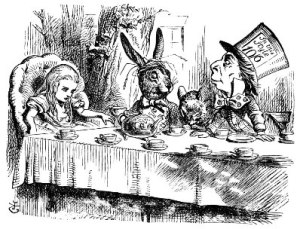Writing a mystery novel is hard enough, what with assembling suspects, creating motives, devising the method of murder, and planting numerous red herrings.
Most mystery writers find the opening especially problematic. We are told by writing teachers, blogs, and how-to books that we have to grab the reader’s attention right away. And let’s face it, nothing grabs someone’s attention like a dead body.
However, opinion is divided as to the optimum time to reveal the bloody corpse. Some say it has to be on the first page, while others suggest by the end of the first, second, or third chapter. But most agree that it should be as close to the beginning of the novel as possible.
As a writer of traditional mysteries, I prefer that the first thing my readers see not be someone bleeding all over the pub floor. And I’m not alone in this.
Ngaio Marsh often waited until the middle of her books before killing off a character. As for Agatha Christie, people rarely show up at Hercule Poirot’s office or Miss Marple’s cottage with an account of a gruesome killing. Rather, they present a suspicion, a fear that something nasty is about to happen.
My assumptions about my readers are twofold:
- people read mysteries for the challenge of solving the murder, and
- people want to have a relationship with the characters. This is also why many readers prefer a series.
 With this in mind, I want to give my readers ample time to become acquainted with my characters, to observe their interactions and note any conflicts. Thus begins a gradual buildup of suspense as readers start to ponder when, where, how, and who will be murdered. Familiarity with the characters means that readers also have an emotional reaction when the victim dies.
With this in mind, I want to give my readers ample time to become acquainted with my characters, to observe their interactions and note any conflicts. Thus begins a gradual buildup of suspense as readers start to ponder when, where, how, and who will be murdered. Familiarity with the characters means that readers also have an emotional reaction when the victim dies.
Having watched the characters going about their daily lives, readers not only have a deeper understanding of the motives and opportunities for the murder but can easily assemble a list of suspects. And readers like nothing more than to be one step ahead of the detective.
Unlike a police procedural where solving the murder is — dare I say it — a routine event and it doesn’t matter if the detectives have an emotional connection to the victim (although some police procedurals will occasionally include this element), an amateur detective should have a vested interest in solving the murder, a clear reason for getting involved in something that’s better left to the professionals. He or she is usually familiar with the victim, the accused, and/or the location. Likewise, the fate of the characters should be of concern to the readers as well.
For me, the traditional mystery explores the disturbing reality that quite ordinary people are often capable of taking the life of another human being. Given the right circumstances, the middle-aged man you pass every morning walking his dog or the young woman who serves tea and cake in your local cafe has the potential to commit murder. Readers need to feel that they know these people well enough to consider them suspects, even if it’s only that on the morning of the murder they acted out of character. The dog walker took a different route or the waitress shouted at a customer. It’s the little things that can give the game away.
And that’s why I make my readers wait for the body.

 As someone with a long history of academic writing (I still have to remind myself to use contractions!) and almost forty years experience teaching high school students the rules of writing, what I find so liberating about writing fiction is being able to break the rules.
As someone with a long history of academic writing (I still have to remind myself to use contractions!) and almost forty years experience teaching high school students the rules of writing, what I find so liberating about writing fiction is being able to break the rules.









